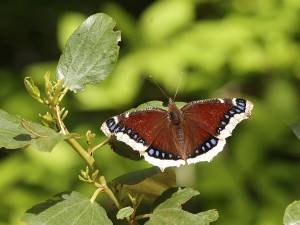By KATHLEEN MULROY
If you’re a fan of natural hot springs pools, and you’re planning a visit to Yellowstone National Park, you might want to try the new Yellowstone Hot Springs (YHS). This resort in Gardiner, Mont., is the latest in a series of hot springs built on the banks of the Yellowstone River since the late 1800s.
The original hot springs resort in this area, LaDuke Hot Springs, was erected in 1899. Julius J. LaDuke, a French-Canadian immigrant, had staked a mining claim on the western banks of the Yellowstone. What he found instead was something unexpected; very hot water.
Being an entrepreneur, Julius saw an opportunity and quickly acted on it. He built a series of wooden, riverbank hot tubs, and his small resort began to serve the then-booming mining communities of Aldridge and Electric.
Soon LaDuke gained a new group of hot springs enthusiasts—the hardy tourists who started traveling via train to Yellowstone National Park.
The final rail stop at the time was at nearby Cinnabar, and it was there that visitors disembarked to wait for the next available stagecoach, to take them the remaining 3 miles to the national park’s entrance at Gardiner. Julius correctly anticipated that these travel-weary tourists would welcome a soak at his hot springs before trekking into the park.
The LaDuke Hot Springs’ waters still flow into the Yellowstone River. The water has an average temperature of 145˚F, similar to levels reported during the early 20th century. Much of the resort, however, was destroyed in the 1950s, when the modern Highway 89 was constructed.
In 1909, a new hot springs enterprise started up in the same area. A business consortium built a sanitarium facility and the Corwin Springs Hotel.
Next to the hotel, a large enclosed swimming pool was built, and hot water was transported to the pool through wooden pipes from LaDuke Hot Springs, 2 miles upstream. These facilities became the hub of Corwin Springs through the early 1900s.
Besides serving local miners, the mineral hot springs became a famous stopping point for early “medical tourists.” These travelers were invalids and other sufferers who were looking for relief from a wide variety of medical conditions. Unfortunately, the Corwin Hotel burned down in 1916.
From 1922 to the 1940s, Eagle’s Nest Dude Ranch became the go-to resort in this area. It featured a western-themed clubhouse, a dance hall, a nine-hole golf course, a restaurant, and an open-air plunge. Only the plunge still stands today.
Today, tourists can enjoy the waters at the recently opened, alcohol- and smoking-free YHS. The resort offers the closest pools to Yellowstone National Parks, with a 3,750-square-foot pool that holds an average temperature of 102˚F. The hot plunge averages about 104˚F, while the cold plunge stands around 70˚F.
The facility has a Kneipp Walk, too. This is a shallow pool designed for wading in alternating hot and cold water, which is believed by some to help the body’s circulation. Water for all the pools is piped from the old LaDuke Hot Springs.
The YHS pools are flow-through, meaning fresh mineral water constantly flows through the earth to the pools, keeping the water clean. The mineral content of the water is listed by YHS as consisting of Calcium, Magnesium, Sodium, Sulfate, Chloride, Potassium, Silica, Boron, Lithium, Strontium, Cesium, and Rubidium.
While soaking in the YHS pools, visitors might spot eagles searching for prey, as well as bison, elk and big horned sheep roaming the majestic mountains surrounding the hot springs. ISI
For more information on Yellowstone Hot Springs, check out their website, yellowstonehotspringsmt.com.









